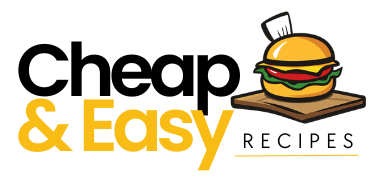
How to Grocery Shop on a Tight Budget (Without Eating Junk)
Grocery shopping on a budget doesn’t have to mean living off ramen noodles and discount cookies — unless you want it to. If you’re trying to stretch your food dollars without filling your cart with processed junk, you’re not alone. Eating well and spending less is totally doable with a little planning and a few smart strategies.
In this post, I’ll show you exactly how to shop on a tight budget without sacrificing nutrition or flavor. Whether you’re feeding a family, cooking for one, or just trying to cut back, these tips will help you keep your meals healthy, easy, and affordable.
💵 1. Set a Realistic Budget
Start with a budget that makes sense for your situation — even $40–$60 per week can go a long way with smart planning. Use cash, a separate card, or tracking apps to stay on target. Fewer trips to the store = fewer temptations = big savings.
🥫 2. Focus on Budget-Friendly Staples
Build meals around affordable, versatile ingredients like:
- Rice, oats, pasta
- Eggs, canned beans, lentils, ground meat or tofu
- Frozen vegetables, canned tomatoes, potatoes, onions
- Peanut butter, bananas, tuna, tortillas
These basics are nutritious, filling, and can stretch across multiple meals.
🛒 Example: What $50 Buys for One Person
Here’s a sample grocery list that hits the basics and can make a week of meals for one (or even two, with stretching):
| Item | Est. Cost |
|---|---|
| Rice (5 lb) | $3.00 |
| Canned beans (4 cans) | $3.20 |
| Frozen veggies (2 bags) | $4.00 |
| Eggs (dozen) | $2.00 |
| Chicken thighs (2 lb) | $6.00 |
| Oats (1 lb) | $1.50 |
| Peanut butter | $2.00 |
| Bread (whole wheat) | $2.00 |
| Pasta (2 boxes) | $2.00 |
| Canned tomatoes (2) | $2.00 |
| Carrots (1 lb) | $1.00 |
| Bananas (6) | $1.50 |
| Potatoes (3 lb) | $3.00 |
| Cheese (shredded, 8 oz) | $2.50 |
| Onions (2 lb) | $1.50 |
| Tortillas (10-count) | $2.00 |
| Spices (bulk, basic) | $2.00 |
Total: ~$49.20
This list can cover meals like:
- Rice + beans + veggies bowls
- Chicken stir fry
- Potato and egg hash
- Peanut butter oatmeal for breakfast
- Simple pasta with tomato sauce
- Chicken tacos with carrots/onions
🍽 3. Plan Simple, Flexible Meals
You don’t need a 7-day meal plan with different recipes every night — just a few repeatable meals with overlapping ingredients.
For example:
- Cook a pot of beans and rice — use it for burritos, bowls, or soup
- Roast a tray of carrots, onions, and potatoes — reheat as a side or add to eggs
- Bake chicken once, use it for tacos, rice bowls, and sandwiches
✍️ Want a Blank Grocery List?
Download my free printable grocery list here — organized by category to make shopping fast and focused. (You can also use it to track what you already have at home.)
Tip: Print a few copies, or keep a digital version in your notes app.
🚫 4. Avoid the Junk Trap
Just because something is cheap doesn’t make it a good deal. Skip:
- Sugary snacks and frozen dinners
- Random “BOGO” items you didn’t plan for
- Expensive individual snacks with no nutrition
Stick to the list, and use your money on real food that actually keeps you full.
✅ Bonus Budget-Saving Tips
- Buy store brands — usually identical to name brands
- Shop at discount stores like Aldi, Lidl, or your local ethnic markets
- Use frozen fruit and veggies — nutritious and last longer
- Buy pantry staples in bulk when you can
- Stick with easy meals you enjoy — simple is fine!
❓ FAQ: Budget Grocery Shopping
Q: Are frozen vegetables as healthy as fresh?
Yes! In many cases, frozen veggies are even more nutritious because they’re flash-frozen at peak ripeness. Plus, they’re cheaper and last longer.
Q: What’s the cheapest source of protein?
Canned beans, lentils, eggs, and peanut butter are some of the cheapest, filling, and most versatile proteins. Tofu and canned tuna are also affordable.
Q: Is it okay to eat the same thing all week?
Absolutely — but mix it up by using sauces or seasonings to keep things interesting. A simple base like rice or beans can become tacos, stir-fry, soup, or salad with just a few swaps.
🥄 Final Thoughts
Grocery shopping on a tight budget doesn’t mean sacrificing quality. With a little planning, you can eat better, feel better, and still have money left over.
Want more help? Stay tuned for upcoming posts with simple $5 meal ideas and printable meal planners designed just for real-life budgets.
